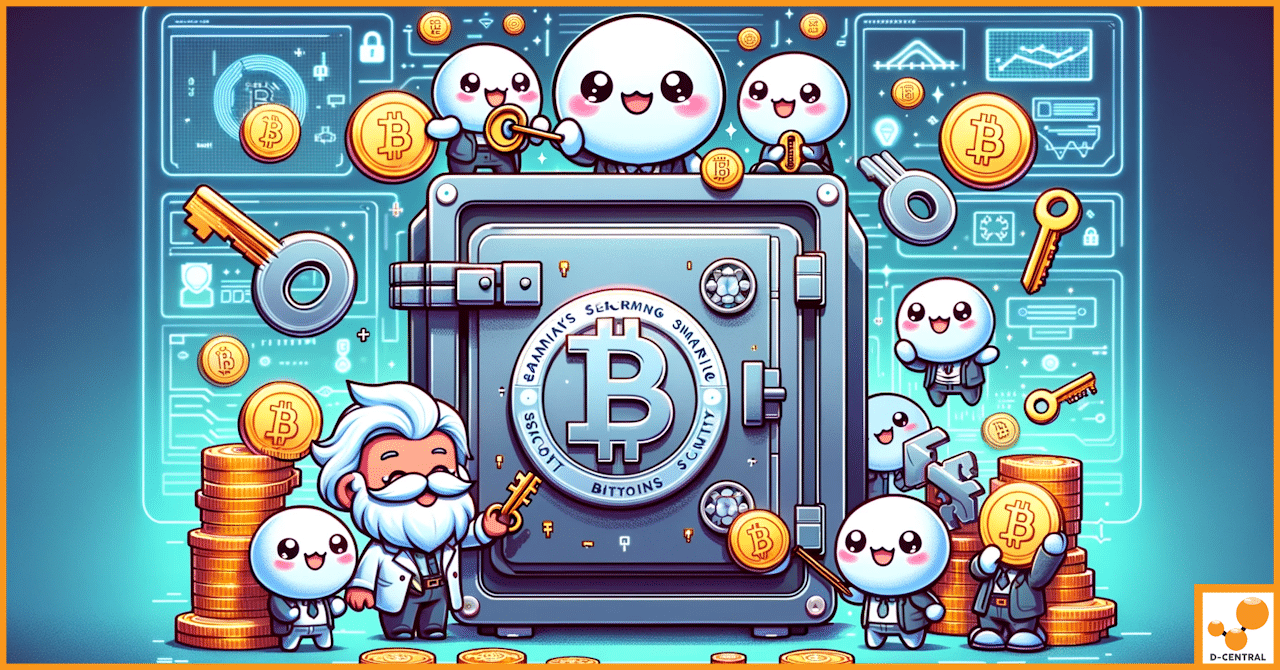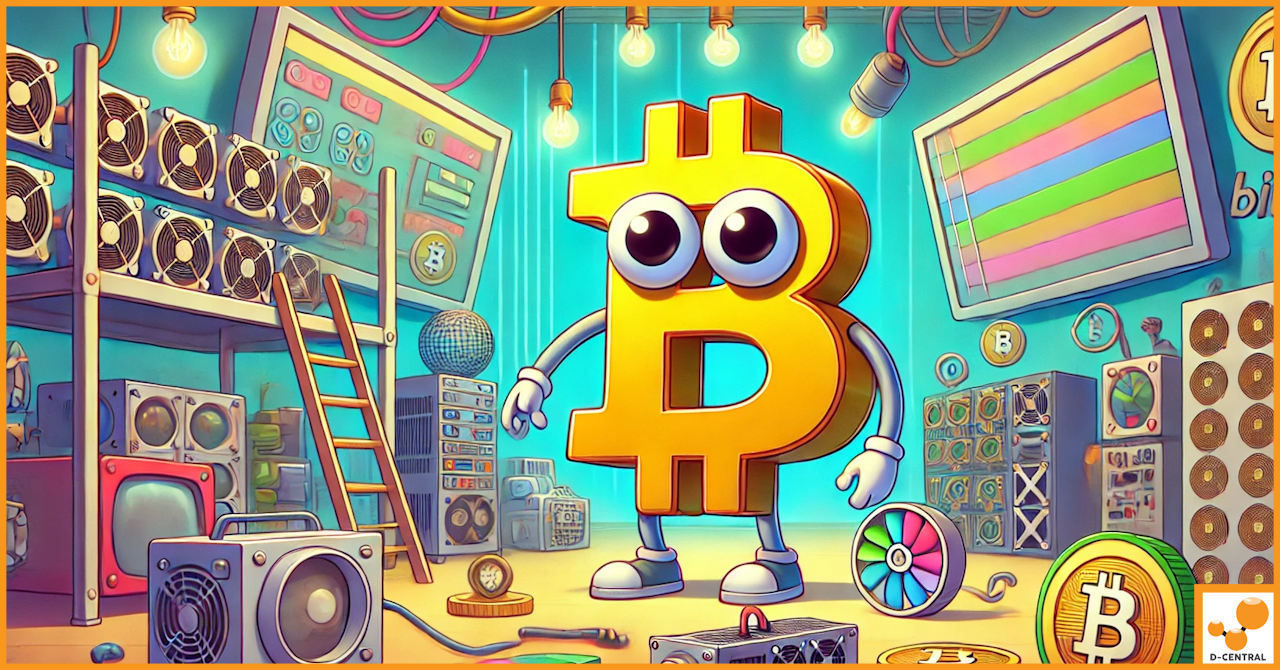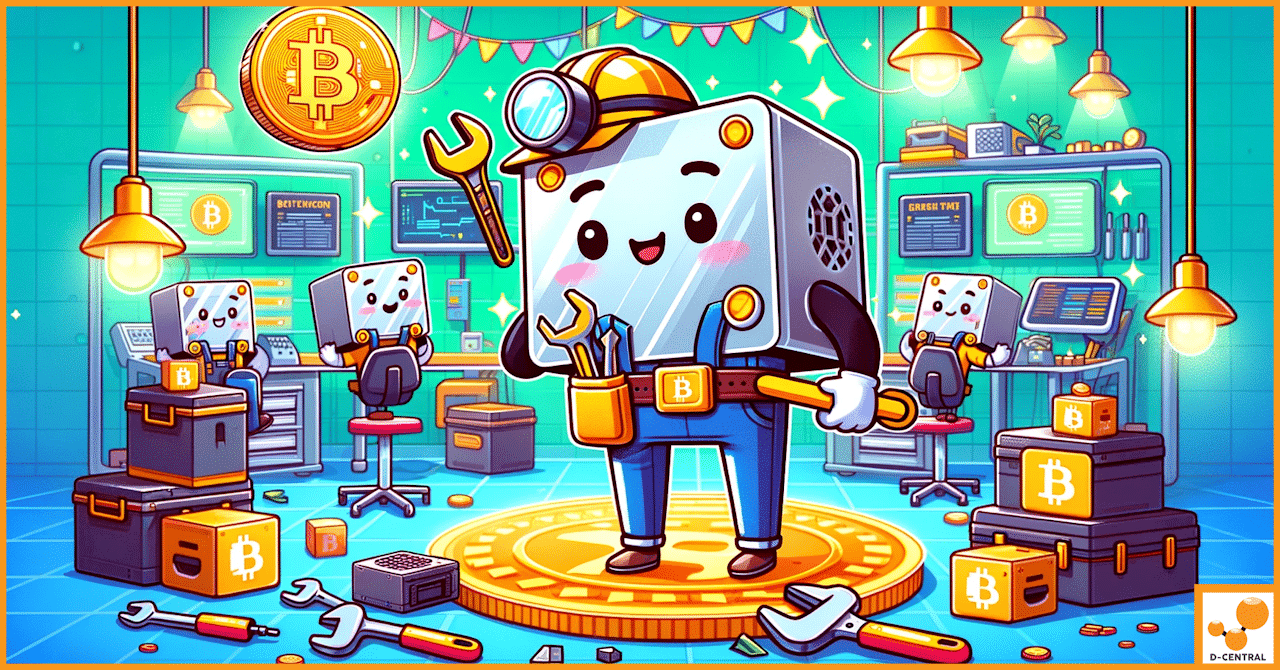
How Shamir’s Secret Sharing Revolutionizes Bitcoin Security
In the dynamic world of Bitcoin, security remains a paramount concern. As the foremost cryptocurrency, Bitcoin not only represents a
4479 Desserte Nord Autoroute 440, Laval, QC H7P 6E2

As Bitcoin continues to captivate investors and tech enthusiasts alike, you might be wondering about innovative ways to join the mining revolution. One intriguing option is repurposing old hardware for Bitcoin mining. In this comprehensive guide, we’ll explore the potential of giving new life to outdated technology while navigating the complexities of cryptocurrency mining.
Before we dive into repurposing old hardware, let’s briefly review what Bitcoin is and how mining works.
Bitcoin mining involves using specialized equipment to solve complex mathematical problems. Miners compete to validate transactions and add new blocks to the blockchain, earning newly minted bitcoins as a reward. This process is crucial for maintaining the integrity and security of the Bitcoin network.
When considering repurposing old hardware for Bitcoin mining, several options are available. However, it’s essential to understand that not all hardware is created equal when it comes to mining efficiency.
While CPUs were once viable for Bitcoin mining, they are no longer efficient enough to compete with more specialized hardware. However, they can still be used for mining other cryptocurrencies that use CPU-friendly algorithms.
GPUs offer more mining power than CPUs and can be repurposed for mining various cryptocurrencies. While not ideal for Bitcoin mining due to the dominance of ASICs, GPUs remain popular for mining other coins like Ethereum (prior to its transition to Proof of Stake).
FPGAs offer a middle ground between GPUs and ASICs in terms of mining efficiency. They can be reprogrammed for different mining algorithms, providing flexibility that ASICs lack. However, their initial cost and complexity may be prohibitive for some miners.
Older ASIC models designed specifically for Bitcoin mining can potentially be repurposed, especially if acquired at a low cost. While they may not be as efficient as the latest models, they can still contribute to mining pools or be used for educational purposes.
Repurposing old hardware for Bitcoin mining comes with its own set of advantages and challenges. Let’s break down the potential costs and benefits to help you make an informed decision.
When evaluating the financial viability of repurposing old hardware for Bitcoin mining, several factors come into play:
Before investing time and resources into repurposing old hardware, use a mining profitability calculator to estimate potential returns. Input your hardware specifications, electricity costs, and current Bitcoin market data to get a realistic projection of your mining operation’s viability.
Before diving into repurposing old hardware for Bitcoin mining, carefully consider these crucial factors:
Older hardware often consumes more power relative to its hash rate. Calculate the energy efficiency (joules per terahash) of your potential mining setup and compare it to modern ASICs. Keep in mind that energy costs can quickly outweigh mining rewards if your setup is inefficient.
The Bitcoin network’s overall hash rate and mining difficulty have increased dramatically over the years. This means that older, less powerful hardware may struggle to compete effectively. Stay informed about current network statistics to assess your potential impact.
Mining operations generate significant heat and noise. Ensure you have adequate cooling solutions in place, especially if you’re repurposing multiple pieces of hardware. Consider the impact on your living or working space, particularly if mining from home.
Repurposing old hardware for mining requires technical know-how and ongoing maintenance. Be prepared to invest time in learning about mining software, pool configurations, and hardware optimization techniques.
While Bitcoin mining with repurposed hardware may not be profitable, consider exploring alternative cryptocurrencies that are more friendly to CPU or GPU mining. Some popular options include Monero (XMR) for CPU mining and Ravencoin (RVN) for GPU mining.
While repurposing old hardware can be an educational and potentially rewarding experience, D-Central Technologies offers innovative solutions that combine the best of both worlds: efficient mining and practical applications for everyday use.
D-Central’s Bitaxe series represents a new generation of compact, efficient Bitcoin miners designed for both enthusiasts and serious miners alike.
These compact miners offer an excellent alternative to repurposing old hardware, providing superior efficiency and ease of use.
For those looking to mine Bitcoin at home without the hassle of repurposing old hardware, the Antminer Slim Edition offers a quiet and efficient solution.
D-Central has pioneered the concept of dual-purpose Bitcoin miners that also function as space heaters, providing an innovative solution for home miners.
These innovative products offer a practical alternative to repurposing old hardware, allowing you to heat your space while earning Bitcoin.
If you’ve decided that repurposing old hardware for Bitcoin mining isn’t the right fit for you, consider these alternatives:
While the initial investment is higher, modern ASIC miners offer superior efficiency and hash rates, potentially leading to better long-term profitability.
Cloud mining services allow you to rent mining power without the need for physical hardware. However, be cautious and thoroughly research providers to avoid scams.
Instead of mining, consider purchasing Bitcoin directly through reputable exchanges. This approach eliminates the technical complexities of mining while still allowing you to participate in the Bitcoin ecosystem.
Some companies offer investment opportunities in large-scale mining operations, allowing you to earn a share of mining rewards without managing the hardware yourself.
While repurposing old hardware for Bitcoin mining can be an educational experience, it’s rarely profitable in today’s competitive mining landscape. However, the skills and knowledge gained can be valuable. For those serious about Bitcoin mining, investing in modern, efficient equipment or exploring innovative solutions like D-Central’s Bitaxe series or Bitcoin mining heaters may offer a more rewarding path.
Explore D-Central’s range of efficient, innovative mining solutions tailored for home use and beyond.
Have questions or want to connect with fellow mining enthusiasts? Join our Discord channel for expert advice, community support, and the latest updates on Bitcoin mining technology.
A: While it’s technically possible to mine Bitcoin with repurposed hardware, it’s unlikely to be profitable due to the high energy costs and low hash rates compared to specialized ASIC miners. However, you might consider mining alternative cryptocurrencies that are more friendly to CPU or GPU mining.
A: To mine Bitcoin profitably today, you generally need specialized ASIC (Application-Specific Integrated Circuit) miners. These devices are designed specifically for Bitcoin mining and offer much higher hash rates and energy efficiency compared to general-purpose computer hardware.
A: The electricity consumption for Bitcoin mining varies widely depending on the hardware used and the scale of the operation. Modern ASIC miners can consume anywhere from 800W to 3500W or more. When repurposing old hardware, the energy efficiency is typically lower, meaning higher electricity consumption relative to the hash rate produced.
A: Yes, there are more environmentally friendly approaches to Bitcoin mining:
A: The time it takes to mine one Bitcoin depends on your mining power (hash rate) and luck. With the current network difficulty, it’s impractical for individual miners to mine whole Bitcoins. Most miners join mining pools to earn smaller, more frequent rewards based on their contributed hash rate. The actual time to mine one Bitcoin can range from days to years, depending on these factors.
A: Whether it’s better to buy or mine Bitcoin depends on various factors, including:
For many individuals, especially those without access to cheap electricity or the latest mining hardware, buying Bitcoin directly may be more cost-effective than mining. However, mining can be rewarding for those with the right resources and expertise.
As we’ve explored throughout this article, repurposing old hardware for Bitcoin mining can be an educational and potentially rewarding experience. However, it’s crucial to approach this venture with realistic expectations and a clear understanding of the challenges involved.
While the allure of giving new life to old hardware is strong, the competitive nature of Bitcoin mining today often makes it impractical for profitability. The increasing network difficulty and the efficiency of modern ASIC miners have raised the bar significantly for what constitutes viable mining hardware.
That said, the journey of repurposing hardware can provide valuable insights into the world of cryptocurrency, blockchain technology, and computer hardware optimization. These skills and knowledge can be applied in various ways, even if your repurposed mining rig doesn’t turn a profit.
For those serious about entering the world of Bitcoin mining, consider these key takeaways:
Remember, the world of cryptocurrency is ever-evolving. What might not be profitable today could become viable in the future, and vice versa. Stay curious, keep learning, and don’t be afraid to experiment (within your means, of course).
Whether you decide to repurpose old hardware, invest in modern mining equipment, or simply purchase Bitcoin directly, the key is to make an informed decision that aligns with your goals, resources, and risk tolerance.
Whether you’re looking to start mining, upgrade your setup, or explore innovative Bitcoin-earning solutions, D-Central has you covered.
DISCLAIMER: D-Central Technologies and its associated content, including this blog, do not serve as financial advisors or official investment advisors. The insights and opinions shared here or by any guests featured in our content are provided purely for informational and educational purposes. Such communications should not be interpreted as financial, investment, legal, tax, or any form of specific advice. We are committed to advancing the knowledge and understanding of Bitcoin and its potential impact on society. However, we urge our community to proceed with caution and informed judgment in all related endeavors.
Related Posts

In the dynamic world of Bitcoin, security remains a paramount concern. As the foremost cryptocurrency, Bitcoin not only represents a

The banking sector has experienced a series of disruptions in recent months, with the unfortunate events surrounding Silvergate, Signature, and

Application-Specific Integrated Circuits (ASICs) represent a pivotal advancement in technology, designed specifically to perform singular functions more efficiently than general-purpose